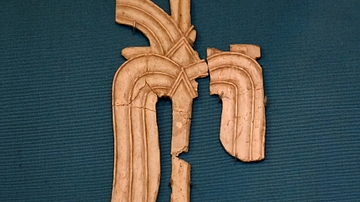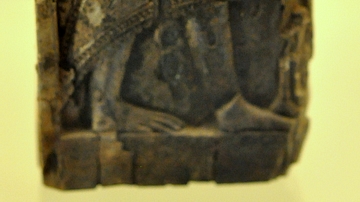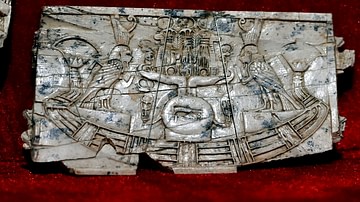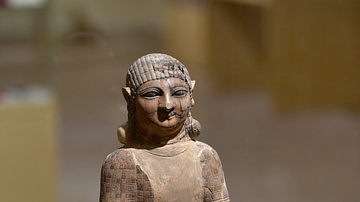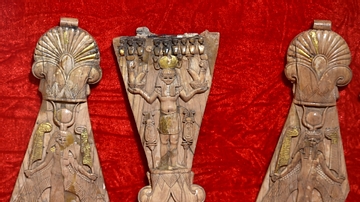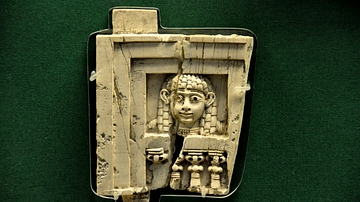Illustration
This cylinder was fragmented into two or three main parts when it was found, although it was carved from one large tusk. The scene depicts an unidentified Egyptian pharaoh wearing the blue crown (khepresh; with a uraeus at the front) of Egypt and an inlaid "usekh" collar. His right hand is raised behind him holding a feather while the left arm grasps a bow and three arrows on the head of a kneeling boy. Behind the Pharaoh, a man stands, holding a staff in his left hand.
This art is part of the "Classical Phoenician style-group". Part of the Nimrud ivories; excavated by the State Board of Antiquities in Iraq in 1975 CE. Neo-Assyrian period, 9th to 7th century BCE. From Well AJ at the North-West Palace, Nimrud, Iraq. On display at the Iraq Museum in Baghdad, Republic of Iraq.
About the Author
References
World History Encyclopedia is an Amazon Associate and earns a commission on qualifying book purchases.Cite This Work
APA Style
Amin, O. S. M. (2019, June 05). Carved Ivory with an Egyptianizing Scene, Nimrud. World History Encyclopedia. Retrieved from https://www.worldhistory.org/image/10885/carved-ivory-with-an-egyptianizing-scene-nimrud/
Chicago Style
Amin, Osama Shukir Muhammed. "Carved Ivory with an Egyptianizing Scene, Nimrud." World History Encyclopedia. Last modified June 05, 2019. https://www.worldhistory.org/image/10885/carved-ivory-with-an-egyptianizing-scene-nimrud/.
MLA Style
Amin, Osama Shukir Muhammed. "Carved Ivory with an Egyptianizing Scene, Nimrud." World History Encyclopedia. World History Encyclopedia, 05 Jun 2019. Web. 16 Apr 2025.



